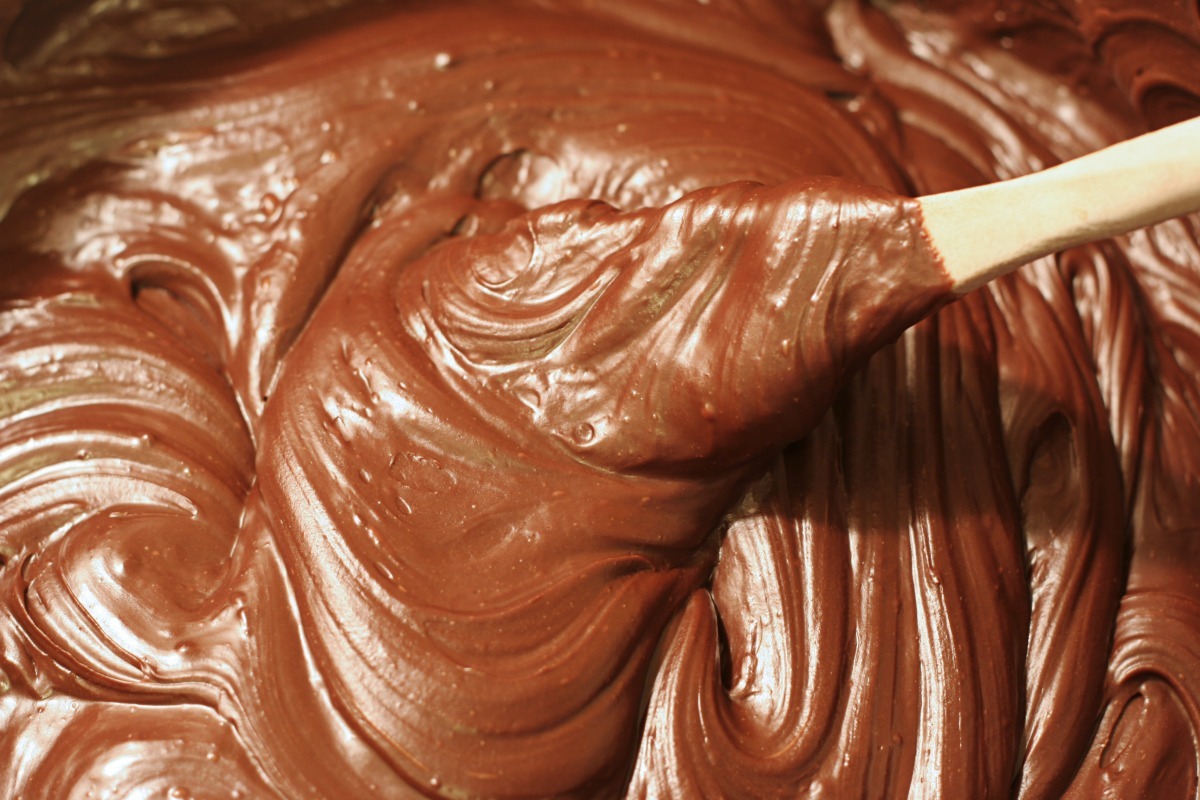Fudge is one of those must-have holiday treats. Everyone has a favourite recipe: Aunt Lucille makes her fudge in the microwave, Grandma adds maple extract and, why not, Ricardo adds white chocolate to his!
Despite every conceivable alternative, the preparation method must pass through the same three unavoidable steps: ingredients are cooked on the stove or in the microwave, cooled and stirred. And, voilà, fudge! Sounds simple, doesnt it? So why does fudge turn out smooth and creamy sometimes, and hard and grainy other times? Follow us to better understand the steps to making perfect fudge.
Desired texture It should hold together well without being too hard and, above all, has to be melty and silky in your mouth. It’s the size of sugar crystals that makes the knees of fudge lovers buckle…the smaller the crystals, the less they are perceived on the tongue and the more the fudge tastes smooth and creamy.

Cook until the correct temperature
You have to control two temperatures to make successful fudge: the cooking temperature AND the temperature at which the mixture cools before stirring to make it crystallize.
Confectionery experiments have shown that the ideal cooking temperature for fudge is around 114 to 115 °C (237 to 239 °F). The cooking is intended to evaporate a part of the liquid and concentrate the sugar. The temperature of the cream/sugar mixture (called syrup) rises as water evaporates. At a cooking temperature of 114 to 115 °C (237 to 239 °F), there is just enough water left in the syrup to ensure it is not too hard or too soft.
This fudge was cooked to a temperature of 118 °C (244 °F). At this temperature, the sugar is too concentrated and there is not enough water left to form syrup around sugar crystals. The result is hard and brittle fudge. To save the fudge, put it in a saucepan with 45 to 60 ml (3 or 4 tbsp.) of 35% cream and bring to a boil, stirring until the sugar is completely melted. Then let it boil without stirring until the thermometer reaches 114 to 115 °C (237 to 239 °F).
This fudge was cooked until the temperature reached only108 °C (226 °F). At this temperature, the sugar is not concentrated enough… there is too much leftover water in the syrup and the resulting fudge is soft. To save the fudge, put it in a saucepan with 15 to 30 ml (1 or 2 tbsp.) of 35% cream and bring to a boil, stirring until the sugar is completely melted. Then let it boil until the thermometer reaches 114 to 115 °C (237 to 239 °F).
After cooking, the mixture must cool before being stirred in order to make it crystallize. This cooling period is essential: this is what determines the size of sugar crystals which, remember, should be as tiny as possible. Ideally, the syrup should cool to a temperature of around 43 to 50 °C (110 to 122 °F).
This fudge was beaten immediately after cooking, while it was still very hot. Its crystals are so big that it has practically reverted back to a sugar state! What happened? Beating the syrup caused the formation of crystallization nuclei, anchor points to which sugar molecules attach to form crystals. Few crystallization nuclei will form in syrup that is still hot, and sugar molecules will readily attach to them. The crystals grow so easily, and the result is really grainy fudge. Better to toss it and start all over!
This fudge cooled until it reached 43 to 45 °C (109 to 113 °F) before being beaten. It has a smooth and creamy texture, just how we like it. Heres why: syrup becomes quite viscous (thick) while cooling, and this slows the movement of sugar molecules. When you start to beat it, billions of crystallization nuclei suddenly form, but the crystals stay tiny as sugar molecules have a hard time sticking together.
Fudge is a crystalline confectionery, due to the fact that it contains sugar crystals. The smaller the crystals, the less we perceive it on the tongue, the smoother and creamier it is in the mouth. As is the case with many sweets, making fudge is all about the details and seemingly simple steps (see “Our tips to making successful fudge”), which have a major impact on the final result. The better you control the size and growth of crystals, the greater the chance the fudge will succeed. And it all begins first and foremost with temperature control.
How to check the temperature?
You should ideally check the temperature with a candy thermometer or probe left in the saucepan throughout cooking. You dont have a thermometer? You can always do the cold water test: drop a small amount of hot syrup in a glass of cold water. As it falls to the bottom of the glass, the syrup cools and forms into a ball. Remove the ball from the water and check its consistency with your fingers. For perfect fudge, the syrup should form a soft ball that can be picked up, but easily flattened. If the syrup is undercooked, drops of syrup will sink to the bottom of the glass in threads or simply dissolve. If the syrup is overcooked, the ball will be hard and difficult to flatten with your fingers. Repeat the test every two or three minutes until you obtain the desired consistency. Use a clean spoon every time you scoop up a bit of syrup.
How to Fix Fudge
FAQ
How hard should fudge be?
Is fudge meant to be soft?
What is the texture of fudge?
Can hardened fudge be softened?
